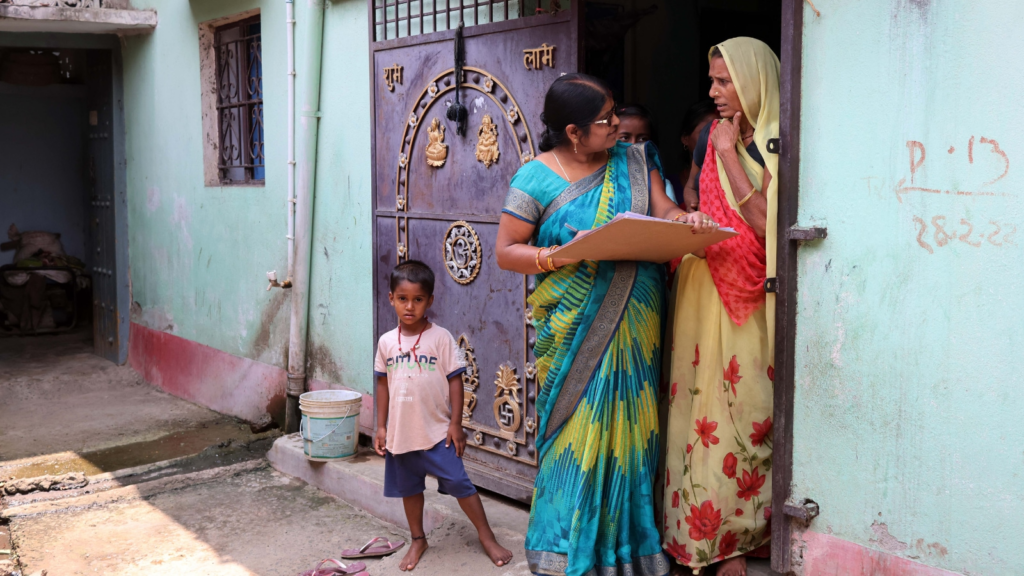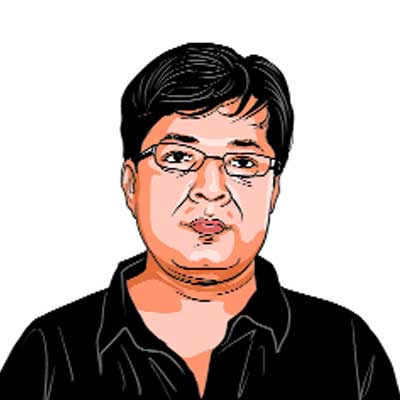New Delhi, PatnaOctober 13, 2025 05:20 PM IST
First published on: Oct 13, 2025 at 05:20 PM IST
Weeks ahead of the Bihar Assembly polls, the National Commission for Backward Classes (NCBC) has asked the Bihar government to provide data related to the socio-economic and educational backwardness of 18 castes that the state has sought to include in the central list of Other Backward Classes (OBC). This has irked the RJD, which termed the entire exercise a “belated lollipop dangled by the Nitish government”.
The 18 caste groups are Batham Vaishya, Biyahut Kalwar, Chhippi, Donwar, Sayee/Fakir/Diwan (Muslim), Goldar, Gosai, Laxmi Narayan Gola, Madriya (Muslim), Sainthwar, Modak/Mayra, Samri Vaishya, Surjapuri Muslim, Sutradhar, Bhat (Muslim), Godi, Partha and Itpaj/Ibrahimi in the Central OBC list. According to the 2023 Bihar caste survey, OBCs and Extremely Backward Classes (EBCs) constitute 27% and 36%, respectively, of the state’s 13.07 crore population.
NCBC chairperson Hansraj Ahir held a public hearing — the fourth on the issue — in Patna last week along with commission member Bhuwan Bhushan Kamal and senior state government officials. “We have sought up-to-date information and data from the state government on the socio-economic and educational backwardness of the 18 communities and we may have another meeting in the next three weeks. The proposal has been pending for a while (since 2016). We have also heard a few representations from members of the community,” Ahir told The Indian Express.
The Nitish Kumar-led government has told the NCBC that it is in the process of collecting information about the 18 communities and is learnt to have sought more time from the panel to complete the exercise.
While larger groups such as the Chhippi, Sayee, and Itfarosh/Gadheri are already included in the central list of OBCs, the Bihar government has now proposed to include sub-groups under them. The Itfarosh/Gadheri, included in the Central OBC list in December 2016, are categorised as EBC in Bihar and, along with the Ibrahimi group, number just over 9,400. The Sayee/Fakir/Diwan community is also categorised as EBC and its estimated strength is 6.63 lakh. The Batham Vaishya, Biyahut Kalwar, and Modak/Mayra are among the 20 sub-castes of the Baniya community, which accounts for 2.3% of the state’s population.
The Donwar community (found in Madhubani and Supaul districts) has a population of only 1,361, while Samri Vaishya, Chhippi, and Bhat have populations of 7,327, 873 and over 89,000, respectively.
Inclusion in the central list of OBCs, which currently has 132 castes, will bring reservation benefits in Central government jobs, institutes of higher education, and scholarships. The NCBC is empowered to examine requests for inclusion of communities in the central list and to advise the Centre on the matter.
A week before the Maharashtra Assembly elections were announced last year, the NCBC had recommended the inclusion of 15 castes and sub-groups in the central OBC list. It had also recommended adding Bhoyars and Powars separately to the list, as well as the inclusion of Gujar sub-groups.
The JD(U) termed the move a bid to “include even numerically smaller sub-groups in the welfare net”. “The Nitish government conducted the caste survey successfully, following which several more communities were brought under the purview of our targeted welfare programmes for backward classes. We hope the Centre will positively consider the proposal,” JD(U) spokesperson Neeraj Kumar said.
Calling it a “belated lollipop dangled by the Nitish government”, RJD spokesperson Subodh Kumar Mehta said his party, unlike the JD)U), takes everyone along. “We can gauge the NDA government’s intention by the fact that it allowed the Rohini Commission report (on sub-categorisation of OBCs) in cold storage. If they really wanted to include smaller communities and sub-groups, they should have expedited the move,” he said.



